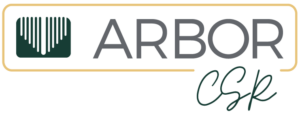Arbor takes pride in empowering employees to reach their full potential, helping to strengthen our clients and communities. With that aim, our company supported the Fifth Annual Smile Farms Invitational golf outing in Jericho, NY, on September 16, benefiting the Long Island-based non-profit dedicated to advancing opportunities for people with disabilities.
At Arbor, we are committed to responsible and ethical business practices. That is why we follow the ISS (Investor Stewardship Services) Environmental, Social, and Governance (ESG) standards. ISS is a leading provider of corporate governance and sustainability solutions. Their ESG standards are used by investors to assess and manage their ESG risks and opportunities.
By following the standards, we are demonstrating our commitment to:
- Environmental stewardship: We are working to reduce our environmental impact and support sustainable practices.
- Social responsibility: We are committed to creating a positive social impact, including through our employee relations, diversity and inclusion initiatives, and community support.
- Good governance: We are committed to sound corporate governance practices, including transparency, accountability, and ethical behavior.
We believe that following the ISS ESG standards is good for our business, our customers, and our community. It allows us to attract and retain top talent, build strong relationships with our customers, and operate in a sustainable and responsible manner.
We encourage our customers to learn more about the ISS ESG standards and how they are impacting the financial industry. You can find more information on the ISS website: https://www.issgovernance.com/esg/

Reporting
Arbor is committed to transparency and accountability in our corporate responsibility program and as such, publishes an annual Corporate Responsibility and Impact Report. In addition, we have a number of responsible governance policies in place including:
Risk Mitigation
Arbor is committed to continuous improvement of our risk management framework. We regularly review and update our framework to ensure that it reflects the latest best practices and that it is tailored to our specific risks. Our framework includes:
- A clear and well-defined risk management policy that sets our approach to identifying, assessing, managing, and monitoring risks.
- A strong risk management culture focused on risk awareness and accountability throughout our organization.
- A robust risk management process that includes regular risk assessments, the development of mitigation strategies, and ongoing monitoring of risks.
We believe that our strong commitment to risk mitigation is a key differentiator for our company. It allows us to provide our customers with confidence that their mortgages are safe and secure.


